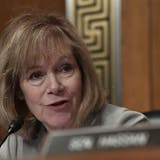John Dunlop, a mechanical engineer who designed waste-heat-powered boilers and generators in the 1970s, spent the next 40-plus years as a pioneer of what has become Minnesota's considerable renewable-energy industry.
As a Midwest leader for the American Wind Energy Association and Solar Energy Industries Association, he nurtured and pushed clean energy industries that have grown to employ more than 60,000 Minnesotans over the last generation.
Even his lifestyle promoted clean energy, from retrofitting his Bryn Mawr duplex into an ultra-efficient home to his plug-in electric vehicle that's becoming less and less a novelty as U.S. EV sales take off.
"We have strived to eliminate carbon emissions from our life the entire time we've been here and largely succeeded," said Dunlop, a trim, youthful 77.
Last week, John and Susan Dunlop, who raised three children in their 5,500-square-foot Minneapolis duplex with seven bedrooms, sold after nine days on the market for $1,000 more than the $649,000 listing price.
The buyer is a young professional who embraces a green lifestyle.
Dunlop's real estate agent Cotty Lowry, said the updated, well-maintained property, across the street from a park and with a view of the downtown skyline, drew nine showings.
"We got a lot more interest in John's duplex ... than my other duplex listings," said Lowry, who specializes in multi-family properties. "The energy improvements, the location, the view and overall great condition."


